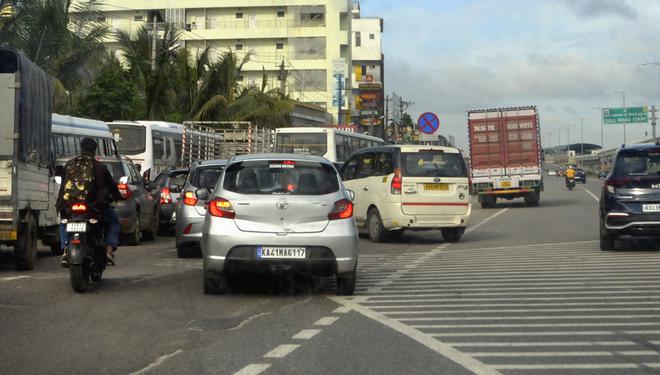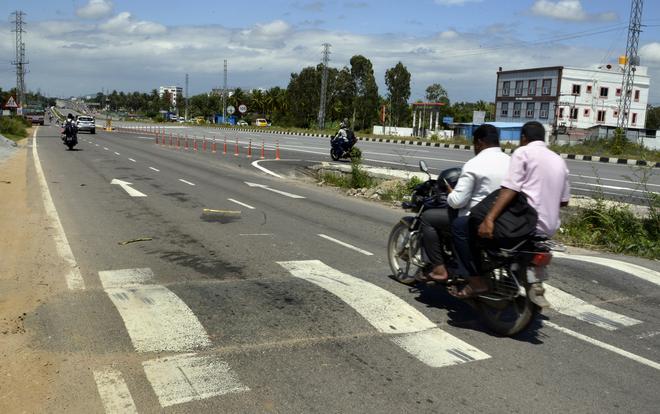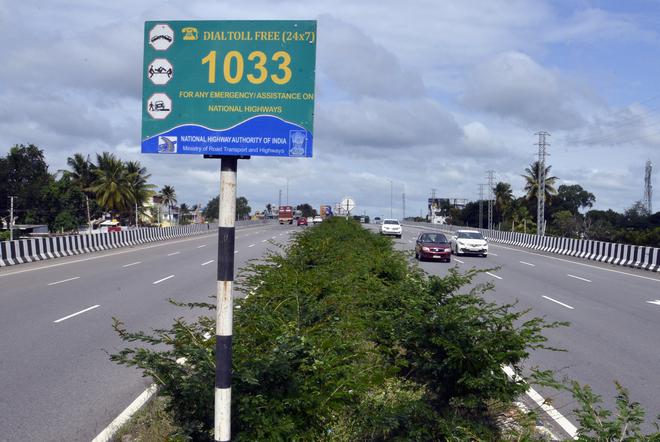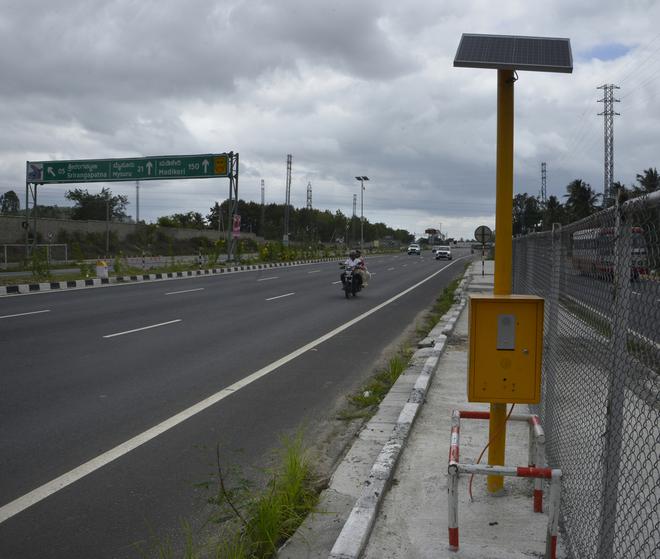As the National Highways Authority of India (NHAI) has banned two-wheelers, autos, and other slow-moving vehicles on the Bengaluru-Mysuru Expressway from August 1, residents of villages and towns along the expressway fear that service roads, already plagued by several problems, is likely to face traffic snarls especially during peak hours and weekends.
When The Hindu visited the expressway on Friday, there were already traffic snarls on the service roads near Bidadi, Ramanagara, and Mandya during peak hours.
Service roads along the expressway swerve into the old highway, which is in a pathetic condition, filled with potholes and without maintenance.
Another problem plaguing the service roads is the numerous speed breakers, near almost every major village along the highway.

Two-way traffic on the service roads makes it even more dangerous than the expressway, which has seen an increasing number of fatal accidents, almost one daily on an average, since it was open to the public.
On top of this, traffic on the service roads is set to multiply from August 1, when two-wheeler and three-wheeler traffic will be barred on the expressway. This comes even as several works on the service roads and at entry and exit points on the expressway are still pending, according to Alok Kumar, Additional Director-General of Police (Traffic and Road Safety), who conducted an inspection recently.

“I take service roads to go to Channapatna and Bengaluru regularly, since there is a hefty toll. However, the service roads have been badly planned and traffic overtakes dangerously. I have missed colliding with oncoming vehicles by a hairline margin several times. Now that the traffic will increase, post the ban, the width of the service roads is very small,” said Sridhar Kumar, a resident of Ramanagara and a regular commuter on the expressway.

The hefty toll on the expressway has resulted in many fast-moving vehicles also taking to the service roads, adding to the traffic and danger on the service roads, said Krishnaswamy, a commuter from Bidadi.
While biker groups have opposed the ban, autorickshaw drivers have said that apart from autos carrying goods commuting between towns, very few autos take the expressway and the ban would mean little to them.

Madhu Krishna, an auto driver from Bidadi, said most autorickshaws ply within town limits and did not take the expressway anyway.
How to enforce the ban?
While commuters have welcomed the ban on two-wheelers, three-wheelers, and all other slow-moving vehicles, many are puzzled as to how the NHAI would enforce it.
“When there are unmanned on-off ramps every 15-20 km, any person can drive on and off the expressway anytime. How will the authorities enforce the ban?,” questioned Suman Pandit, a commuter.
Many motorists have also questioned the need for direct access to the expressway from service roads. Puneeth Rao, a regular commuter between Bengaluru and Mysuru, said: “In other countries, the expressway concept is different. Here, direct access from service roads has been given at many places on the stretch, where vehicles travel at more than 80 kmph. This is very dangerous. While the NHAI has now banned slow-moving vehicles, I am not sure how they will enforce it”.
NHAI officials said that they will put up boards near exit and entry points regarding the ban on slow-moving vehicles and highway patrol vehicles will enforce the ban.
Helpline, AI cameras, CCTV cameras and emergency call boxes for assistance
After several accidents and complaints about a lack of emergency assistance on the Bengaluru-Mysuru Expressway, authorities have installed Artificial Intelligence-powered cameras to catch and penalise speeding motorists. They have also set up CCTV cameras and emergency call boxes on the expressway along with a dedicated helpline number, 1033.
There are signboards advertising the helpline and commuters can call it for ambulances, cranes and patrolling vehicles to respond to any emergencies.
The NHAI has also installed solar-powered SOS boxes at various intervals along the expressway and officials say these GPS-enabled voice communication boxes enable direct contact with local authorities during any emergencies.







